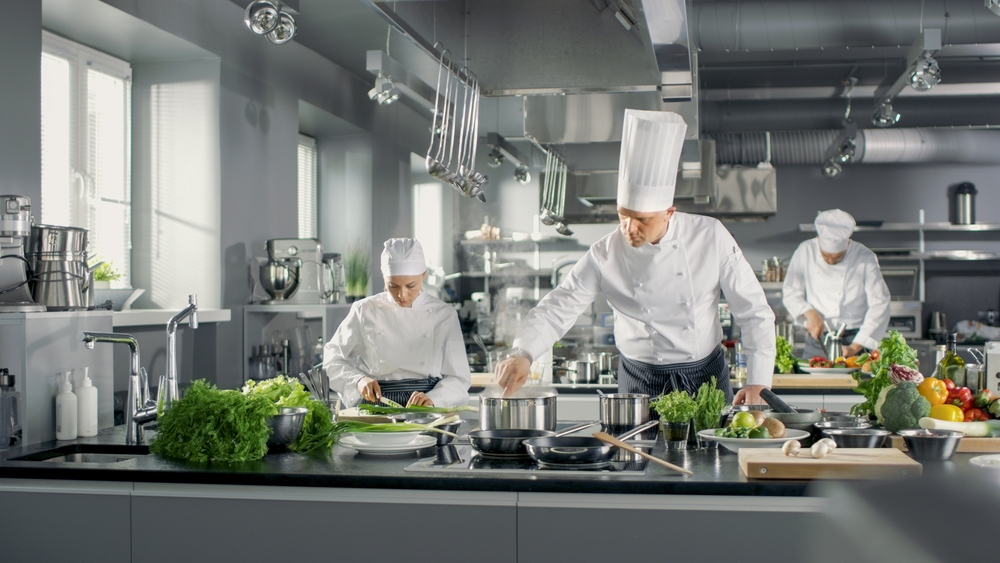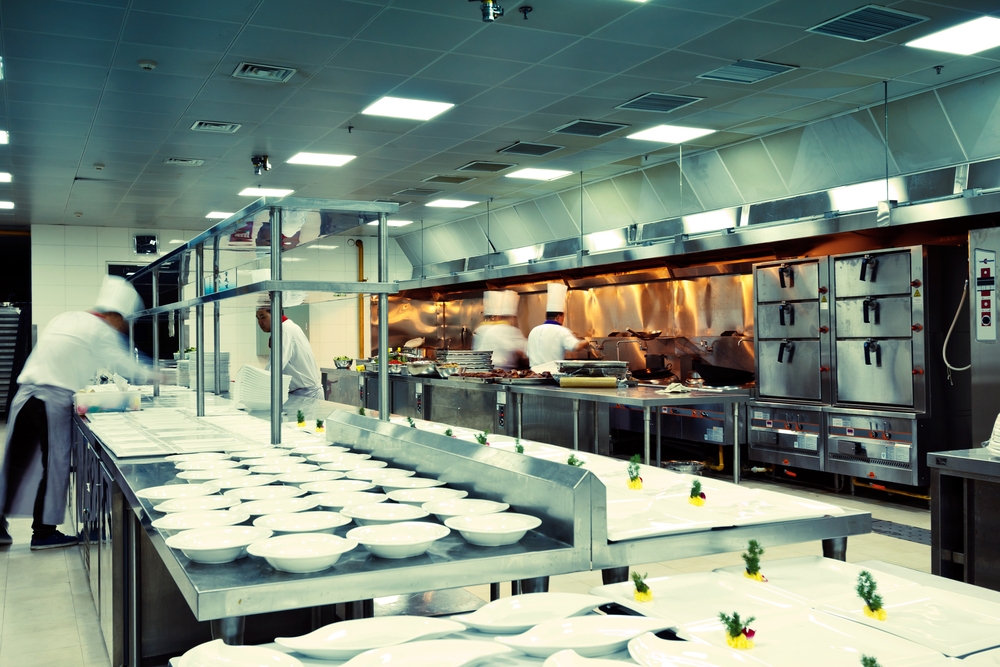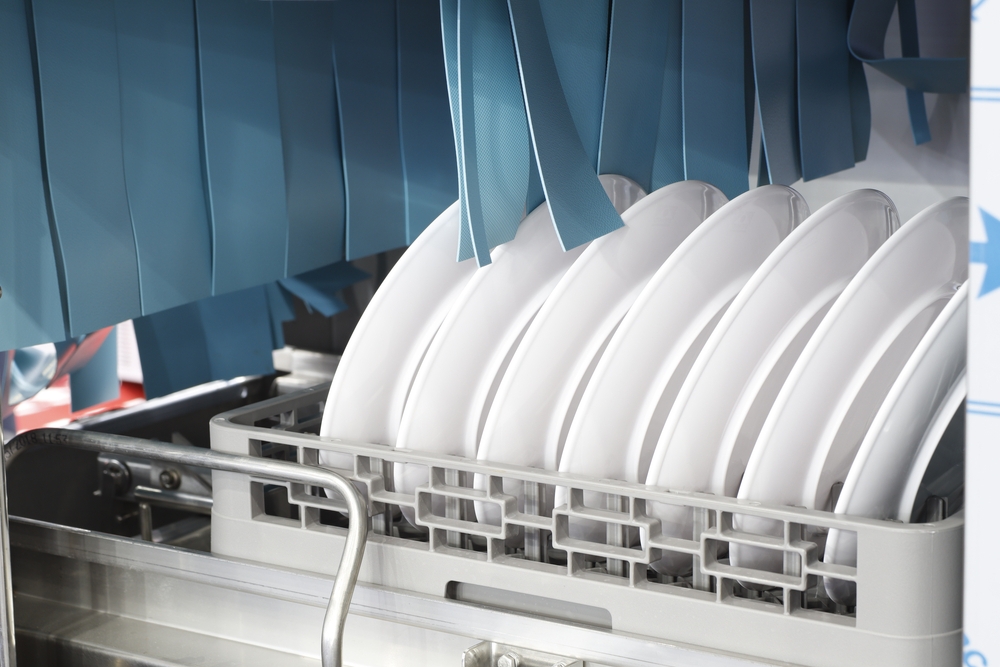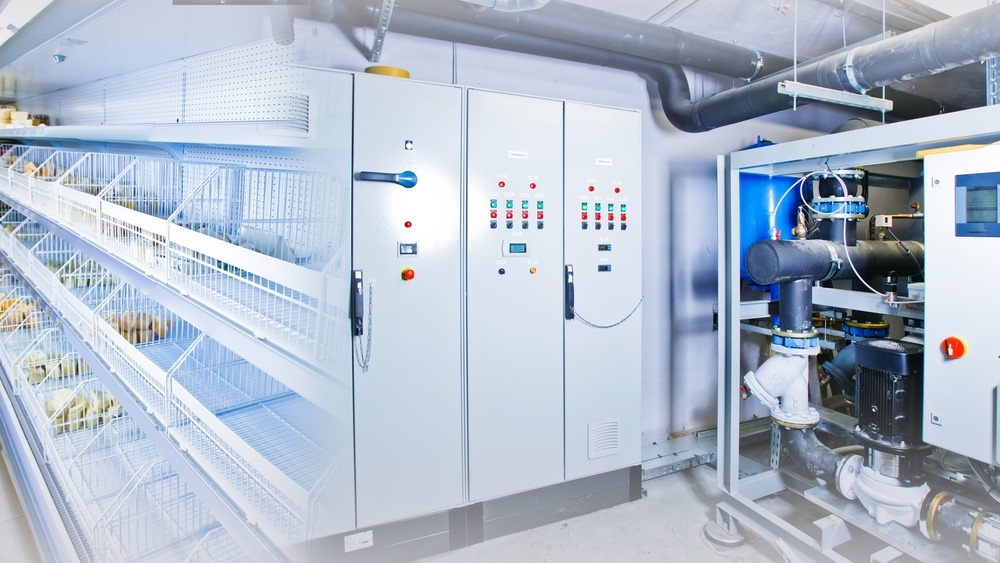Top Essential Equipment for Restaurant Success: The Comprehensive Checklist
By Hamza Benhlima · 4. March 2024
Choosing equipment for your restaurant is more than a matter of stocking the kitchen; it’s about selecting the right tools that will work as hard as you do.
From high-performance ovens that deliver the perfect pizza crust to freezers that ensure your ingredients are always fresh, each item plays a key🔑 role in the quality of your service.
This guide provides a rundown of the essential equipment needed for a restaurant, offering insights to help you make choices that align with the unique requirements of your culinary establishment.
Key Takeaways
- Stock your kitchen with a variety of tools, bearing in mind your menu, kitchen layout, and the reputation of brands, to ensure a top-notch culinary output.
- Lay out your kitchen space to enhance safety, workflow efficiency, and make every inch count.
- The right equipment is more than just eye candy; keep up with regular maintenance and you’ll sidestep the drama of equipment failure during a busy dinner service.
Decoding the Restaurant Equipment List
 restaurant kitchen
restaurant kitchen
The restaurant industry is a world of endless possibilities. From the sizzling grills to the humming refrigerators, every piece of equipment plays a pivotal role in a restaurant kitchen.
But what makes up this arsenal of essential restaurant equipment? The answer, as our seasoned chefs would tell you, is a comprehensive list that covers:
- Cooking
- Food preparation
- Washing
- Refrigeration
What is the approach to create an ideal restaurant equipment list?
Considerations like the restaurant’s concept, menu specifics, kitchen layout, and essential item types and brands significantly influence the selection of appropriate restaurant equipment.
This task may seem daunting, but fear not!
Seeking advice on purchasing restaurant equipment from experienced industry professionals and testing products offered by trusted suppliers can ensure the acquisition of high-quality, suitable equipment.
Cooking Marvels: Ovens and Ranges
At the heart of every restaurant kitchen lies its fiery core: the ovens and ranges. These cooking marvels come in various forms, such as commercial ovens, which include:
- standard ovens
- convection ovens
- solid top ovens
- multifunctional ovens
Each handling different cooking techniques, the grand debate between gas and electric ranges remains, as well as the choice between a gas or electric grill.
While gas ranges offer cooking speed and precise heat control, they pose a higher risk of fire. On the other hand, electric ranges are praised for their even cooking and ease of cleaning.
When investing in these kitchen essentials, several factors must be taken into account.
Choosing the right size for the space, determining the desired cooking capacity, and considering multifunctional options like combi ovens can significantly impact the overall success of a restaurant.
Remember, a wise investment in cooking equipment is an investment in delicious, perfectly cooked dishes.
The Heart of Food Prep: Food Processors
Next on our restaurant equipment journey, we delve into the heart of food preparation: food processors. These culinary assistants come in various forms, categorised mainly as:
- Batch bowl food processors
- Continuous feed food processors
- Combination food processors
- Vertical cutter mixers
Each serves distinct functions such as cutting, slicing, shredding, grinding, and purifying food in commercial kitchens.
Continuous feed food processors, for instance, facilitate the ongoing addition of ingredients while operating, processing food into a separate container — a godsend for high-volume needs.
While batch bowl processors collect processed food in an included bowl, allowing chefs to choose specific types of cuts, combination processors bring together the best of both worlds.
The Core of Quick Service: Microwave Solutions
In the world of quick service, time is of the essence, and microwaves are the staples. These machines are essential for rapidly reheating pre-cooked items and defrosting ingredients.
Commercial microwaves, with their higher wattage and durability, are designed to meet the demands of busy restaurant environments.
From reheating and defrosting to precision tasks like softening ingredients and quickly heating components of complex dishes, microwaves are the secret behind the curtain of quick service eateries.
Crafting the Perfect Kitchen Layout
 restaurant kitchen design
restaurant kitchen design
Deeper into the heart of the restaurant business, the challenge of crafting the perfect kitchen layout emerges.
This task requires strategic planning to allow a seamless flow of personnel and items, ultimately leading to higher output and faster table turnover.
However, a well-planned kitchen layout is not simply about efficient workflow. Safety is a top priority.
Here are some key🔑 considerations for a safe and efficient kitchen layout:
- Incorporate non-slip flooring to prevent accidents.
- Place grip mats strategically in areas prone to spills or wet surfaces.
- Ensure proper waste disposal systems are in place to minimise cross-contamination.
- Designate separate areas for food preparation and cleaning to maintain hygiene standards.
- Install proper ventilation systems to remove heat and odours from the kitchen.
By incorporating these safety measures into your kitchen layout, you can create a space that not only maximises productivity but also prioritises the well-being of your staff and customers.
A well-designed kitchen layout should clearly delineate areas for storage, cleaning, preparation, cooking, and service, making equipment and supplies readily available for the staff.
Even the humble sink plays a critical role in an efficient kitchen layout.
The right types and numbers of sinks for tasks such as handwashing, food prep counters, washing, and equipment cleaning can prevent cross-contamination and ensure an efficient workflow.
Strategic Placement of Cooking Equipment
Planning a restaurant kitchen is a complex task. Each piece of equipment must be selected with consideration for the restaurant’s space limitations and the culinary demands of the menu.
An effective kitchen layout is crucial for the smooth flow and movement of staff, which ensures there’s enough room for all the essential equipment without overcrowding.
It’s imperative to plan the kitchen layout strategically, ensuring sufficient space for:
- food preparation
- cooking
- delivery
- cleaning
This prevents staff members from colliding during order delivery, ensuring a fluid dance of service that maximises efficiency and minimises chaos.
Efficient Food Storage Containers
 restaurant kitchen food storage
restaurant kitchen food storage
Now let’s turn our attention to the backbone of kitchen organisation: food storage containers.
These handy tools, ranging from plastic litre containers to gastronorm pans and allergen-safe food storage boxes, are indispensable for keeping restaurant ingredients fresh and well-organised.
Proper placement of inventory in visible and easy-to-reach areas helps in quick identification of replenishment needs and minimises waste.
However, keeping food off the floor is more than just good housekeeping; it’s a health regulation.
Solutions like dunnage racks and proper storage practices, such as allowing air circulation by not overstocking storage units, can ensure food safety and hygiene.
Selecting Quality Food Preparation Surfaces
A good food prep surface can spell the difference between a smooth operation and a culinary catastrophe.
Stainless steel, for example, is highly recommended for both commercial oven and kitchen counters due to its resistance to corrosion, durability against harsh cleaning products, and the ability not to absorb bacteria.
Granite countertops, while requiring sealing to resist liquids and staining, are valued for their toughness and luxurious appearance.
Quartz, on the other hand, offers a more uniform appearance, aiding in creating a consistent décor for restaurants with multiple locations.
Also, remember to provide ample space and comfortable working height for efficient and safe food handling practices.
Cutting Edge Boards
The right cutting board can make all the difference in the world. Recommended materials for cutting boards in a commercial kitchen include plastic and untreated or food-grade oil-treated solid wood.
These materials are robust and inert, ensuring that they do not retain cuts or food and meat juices.
To prevent cross-contamination and promote a safe food preparation environment, colour-coded plastic cutting boards are recommended. For instance, red can be used for raw meat and green for vegetables.
And let’s not forget the importance of selecting the right material for a board’s resistance to bacterial growth and its ease of cleanliness to minimise the risks of bacterial contamination.
Keeping it Clean: Washing Equipment Essentials
 restaurant kitchen dish washing equipment
restaurant kitchen dish washing equipment
A restaurant kitchen needs a variety of sinks for different purposes, including hand washing, equipment washing, and a potentially separate sink for food preparation.
Specialised sinks, such as disposal sinks with waste disposal systems and compartment sinks designed for washing, rinsing, and sanitising, are crucial to maintain a clean kitchen environment.
Remember, a three-compartment sink, used for washing, rinsing, and sanitising dishes, is a must-have.
Ensuring that you stock up on dishwashers and sinks can help maintain a clean kitchen environment, vital for the health and safety regulations and satisfaction of your guests.
It’s also crucial to prevent contamination; handwashing sinks reduce cross-contamination, and considering sink size and volume is important to accommodate the equipment and food materials being cleaned.
Squeaky-Clean Strategies
While we’ve covered the essential washing equipment, let’s dive a little deeper into some squeaky-clean strategies.
Proper disposal of fats, oils, and grease is essential to maintain hygiene and avoid contamination in food preparation areas.
Choosing the right material for your sink is also of paramount importance. For instance, type 304 stainless steel is recommended for sinks that are constantly wet or exposed to acidic substances due to its corrosion resistance and cleanability.
Regular cleaning and descaling are important maintenance tasks for sinks. Never clean stainless steel sinks with steel wool or harsh abrasives.
Instead, use soft cloths with gentle cleaners to preserve the protective chromium oxide layer.
Also, keep sinks dry when not in use to prevent water spots and maintain their appearance, supporting daily wipe and dry maintenance to prevent the buildup of contaminants.
Preserving Freshness: Refrigeration and Freezing
 restaurant kitchen refrigerator
restaurant kitchen refrigerator
Now, let’s dive into the critical world of refrigeration and freezing units. These essential pieces of equipment come in several forms, such as:
- Commercial refrigerators with stainless steel exteriors
- Reach-in freezers
- Walk-in refrigerators
- Under-counter refrigerators
- Commercial upright freezers
- Commercial chest freezers
- Undercounter freezers
When choosing refrigeration and freezing equipment, consider the storage space needed, the size of the kitchen, and the scale of restaurant operations.
To ensure the safety and efficiency of refrigeration equipment, perform regular cleaning of condenser and evaporator coils, and adhere to health and other safety regulations and guidelines regarding temperatures for storing and heating food.
Ice Machine Mastery
Ice machines are essential for serving drinks and ensuring a constant supply of ice at all times. In a restaurant, an automatic ice maker is considered essential, particularly if there is a full bar and a wide array of cocktails on offer.
It ensures that the establishment always has a steady supply of ice for drinks.
But ice machine mastery is not just about having one; it’s also about maintaining it. Regular cleaning and descaling are important maintenance tasks for ice makers.
Disassemble, clean, and sanitise ice machines and bins, discarding any ice produced during the process as part of the maintenance protocol.
Safety First: Proper Safety Equipment
In the realm of restaurant equipment, safety isn’t merely a priority; it’s a fundamental requirement. Fire safety in a restaurant includes:
- Accessible fire exits
- Proper fire extinguishers
- Suppression systems
- Alarms and sprinkler systems
- All clearly marked and understood from the kitchen’s first day of operation
Signage such as wet floor signs is crucial to alert staff and patrons to potential hazards.
But safety extends beyond just fire. Adequate ventilation is essential to remove cooking fumes and provide safe work conditions.
Personal protective equipment like goggles and aprons protect staff during cleaning and food preparation.
And let’s not forget the importance of a fully stocked first aid kit for emergency scenarios and standard safety procedures, including hairnets and protective clothing when working with food.
Heat Retention Heroes: Steam Tables
Steam tables are an essential tool perfect for keeping sauces and other prepped food warm throughout service hours, particularly in cafeterias, buffets, and other settings with large quantities of food🥘.
For food quality and safety, steam tables should maintain food at 140 degrees Fahrenheit, as lower temperatures can increase health risks.
Steam tables come in various sizes and offer a choice between gas steam tables for quick heating and electric ones for energy efficiency and precise control.
For optimal heat retention and freshness, food items on steam tables should be covered during low service times and arranged side by side without gaps to prevent steam from escaping and ensure cleanliness.
Setting the Scene: Front-of-House Equipment
As we venture out of the kitchen and into the dining area, we encounter a different kind of restaurant equipment.
Front-of-house equipment, ranging from serving ware sets to appealing displayware, plays a pivotal role in crafting a welcoming ambiance for diners.
For restaurant owners, a kitchen display system, as part of the restaurant equipment, ensures seamless communication between the kitchen and front-of-house staff, and utilising a kitchen display system can further enhance this process.
In addition, linens like cloth napkins and tablecloths are essential elements in setting a welcoming scene for diners.
Remember, the inventory of servingware should reflect the restaurant’s maximum customer capacity, considering both the busiest days and potential breakages, to ensure service is never compromised.
Operational Efficiency: Back-End Support Systems
A comprehensive POS system can significantly improve efficient restaurant operations and inventory management.
Restaurant POS systems vary, from in-store to cloud-based options, catering to different operational needs and providing benefits such as sales tracking and management analytics.
Mobile storage racks and high-density shelving units are essential for the efficient organisation and transportation of supplies.
The selection of storage solutions, such as wall-mount, cantilever, and security shelving, is influenced by factors including the restaurant’s layout, cleaning routines, and the need for operational flexibility.
Maximising Longevity: Maintenance Tips for Commercial Kitchen Equipment
Finally, acquiring the correct restaurant equipment is just the beginning. The journey to a successful restaurant includes not only the purchase of equipment but also:
- Regular equipment maintenance to keep the kitchen functioning at peak performance
- Identifying any potential safety hazards
- Maintenance is critical to extend equipment life, reduce utility consumption, and prevent unexpected breakdowns.
Efficacy in maintenance and repairs such as cleaning burners and grease cups, greasing valves, and checking door operations helps ensure the safety and satisfaction of guests.
Regular boil-outs of fry tanks, policing evaporator coils for icing, and checking for proper combustion in gas equipment are specific preventive steps to keep equipment safe and operational.
Lubricating refrigerator and freezer hinges and keeping a log of all maintenance activities can prevent wear and enable a patterned approach to identifying issues.
Summary
We’ve seen that every piece, from the fiery ovens to the cool refrigeration units and handy steam tables, is essential for a restaurant’s smooth operation.
We’ve also highlighted the significance of a smart kitchen layout, the necessity for top-notch food prep surfaces, and how vital it is to keep things sparkling with the right washing gear.
Navigating the extensive world of restaurant kitchen equipment might seem daunting, but with the right advice and a solid grasp of your needs, it’s definitely manageable.
Keep in mind, the secret to a restaurant’s success is as much about what happens in the kitchen as what ends up on the plate!
Frequently Asked Questions
What is restaurant equipment?
Restaurant equipment includes a wide range of tools and appliances used in commercial kitchens, such as ovens, refrigerators, and food storage containers, as well as hardware and software like point of sale systems and kitchen display systems. So basically, anything that helps make delicious food and keep things running smoothly in a restaurant.
What are the key factors to consider when purchasing restaurant kitchen equipment?
When purchasing restaurant kitchen equipment, consider the restaurant’s concept, menu specifics, kitchen layout, and essential item types and brands for a smoother operation. Adjust your choices based on these factors to boost your kitchen’s efficiency and success.
Why are food processors essential in a commercial kitchen?
Food processors are essential in a commercial kitchen because they can perform a variety of prep tasks, increasing efficiency and productivity.
How can I ensure an efficient kitchen layout for my restaurant?
Ensure an efficient kitchen layout by strategically planning clear zones for storage, cleaning, preparation, cooking, and service, to create a seamless flow of personnel and items.

